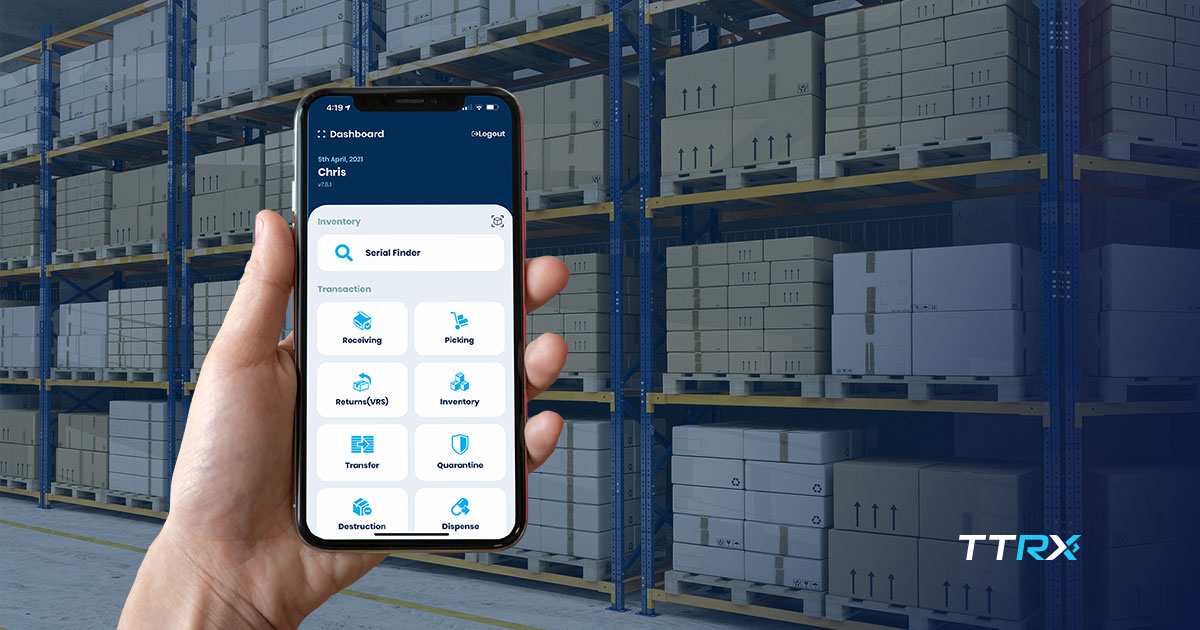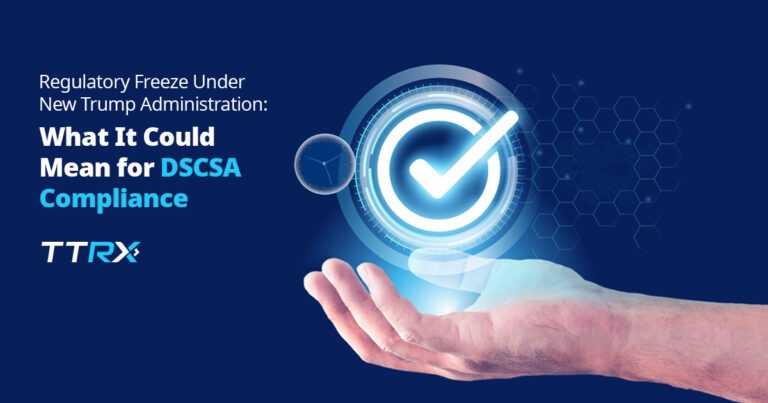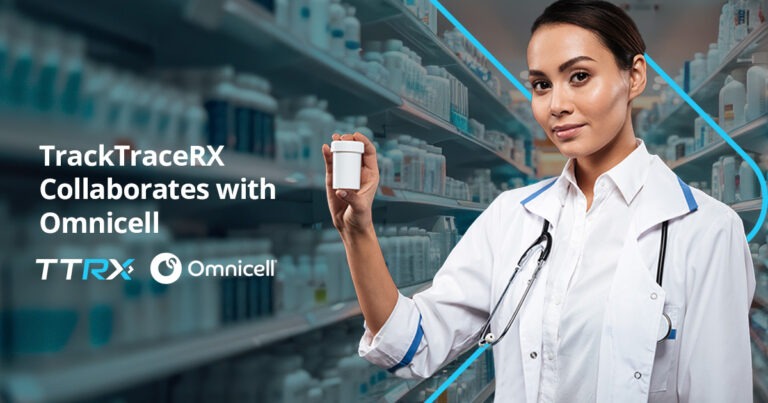Find out how traceability can, beyond minimizing costs, give competitive advantages to smart industries.
Given the current situation in which, on one hand, we have regulatory agencies at state, federal and global levels working increasingly towards implementing a connected, safe and reliable tracking system on national and international scales; on the other hand, we live in a world with globalized industry where production processes are often transoceanic, with different parties involved in different locations for the production and commercialization of a single product.
Industries must, therefore, constantly seek to update and monitor their production systems, seeking to adhere to regulatory norms, quality standards and work ethics. Even so, in certain situations, problems may arise that can happen outside these quality parameters. Then there is the recall, moments that trigger an increase in costs and financial losses with replacement, in addition to a potential loss in brand reputation, lawsuits and a fall in sales.
As a result, product recall can be identified as one of the greatest risks to production and is also among those that represent the greatest impact and cost to industries. The risks are wide-ranging and diverse.
What is recall?
Recall is the term that companies and industries give to the voluntary removal method for correction or replacement of marketed products that present risks to users and end consumers due to manufacturing defects, malfunction, contamination, violation of technical norms and quality standards or other risks.
Recalls take place within differing sectors, such as pharmaceutical, automotive, cosmetics and food. Recall costs are absorbed by the company / industry responsible, and include:
- Tracking processes;
- Publicizing and broadcasting informative news on differing platforms of mass-media communication;
- Removal of products that have been commercialized or already in circulation;
- Repair or replacement of defective products sold;
- Refunding consumers;
- Potential compensation claim processes resulting from the use or application of the defective product sold.
What are the main causes of recalls in the industrial sector?
Supply chains of companies and industries have undergone an intense transformation process from the second half of the 20th century to the present day. Today, it is very likely that suppliers and service providers based in differing countries and continents are involved in the manufacturing of a certain product until it reaches retail stores.
This phenomenon is the result of globalization, in which the search for cost reduction and resource optimization has led companies and industries to increasingly use global supply chains, outsourcing processes to increase their market competitiveness.
However, even though these strategies contribute to improved efficiency for companies and industries, they end up creating a greater risk of recall. For this reason, the challenges in respect of quality norms and standards are immense, both on regional and global scales.
It is worth mentioning some of the main causes of recalls in the industrial sector:
- Biological, chemical or physical contamination;
- Cross contamination;
- Results from inspections, analysis and external test by regulatory agencies;
- Results from inspections, analysis and internal tests from the companies and industries themselves;
- Conflicts over norm and quality standard requirements between differing regulatory agencies in different territories;
- Complaints from suppliers, distributors, traders and end consumers;
- Product adulteration;
- Misleading advertising, misleading the consumer or omitting information.
Recall impacts on the industry: brand damage, financial costs, loss of credibility and drops in sales
Recent studies by Allianz Global Corporate & Specialty show that the number of recalls grows year by year in countries around the world. Data from surveys carried out within the pharmaceutical and automotive industries show that the average cost of recalling a product is US $ 1 million, which can vary more or less, potentially reaching up to 25 billion.
In addition to cost related figures, it is possible to map out the reasons for carrying out recall: Data from the Food and Drug Administration (FDA); the United States government agency, point out that between 2019 and 2020, the main causes within the automotive sector were: faults with airbags, brakes or gears. In the food sector, cross contamination of allergens such as peanuts or nuts. In the pharmaceutical industry; altered levels of chemical components in medicines, and overheating of batteries being the main cause of recall in the electronics sector.
Depending on the case, recalls can lead industries to remove huge quantities of products on a continental scale. However, these vary from case to case and their impacts are perceived according to the profile and size of the companies and industries responsible.
Small businesses may not survive recalls in the short term, depending on the consolidation of the brand within the market and working capital. Large companies and industries can benefit from having a larger structure and easier access to resources, to absorb impacts in the short term without compromising financial health in the long term.
These impacts can be perceived from the moment the flaws in the manufacturing process are verified, or these can be identified through the disregard for the quality standards demanded by regulatory agencies, or even potentially unethical working situations.
To understand more about this process and its impacts, here is some information about recalls carried out:
- In Brazil, vehicle recall grew by approximately 7% in 2020 compared to 2019 (data from the PapaRecall platform);
- Between 2019 and 2020, the company Tyson Foods (from the food industry) recalled more than 6 tonnes of sliced chicken due to contamination;
- In 2020, the drug Zantac was recalled after affecting more than 15 million people because of the presence of a toxic carcinogenic substance within it;
- Financial costs exceeding $8 billion were levied for the pharmaceutical giant Merck due to the recall of the drug Vioxx, after a study found an increased risk of stroke and heart problems associated with its use (data from Bloomberg);
- The American company; Peanut Corporation declared bankruptcy after the devastating financial impacts of recalling contaminated products due to a salmonella outbreak that affected more than 600 people.
Recall strategies to minimize risk and cost
The need to carry out a recall is an unexpected and unplanned event, and the necessary actions are extremely complex. For this reason, quality control and traceability processes are fundamental.
However, mainstream business and industrial culture do not usually consider planning recall strategies as the preferred method to minimize risks and costs, and, considering that it generally facilitates the recall process when recalls occur. This requires, therefore, that the traditional paradigm observed in production and distribution chains is broken.
When there is holistic and up to date understanding of these chains, it is possible to plan investments and adopt tools to implement smart systems and processes to manage and control the production line. Traceability, then, unfolds in benefits and advantages in quality control and efficient resource management.
Check out 5 recommended steps in decision making to develop a recall strategy:
1. Form a technical recall team
Choose and prepare a multi-sector team, including production line, inventory management, sales, packaging, shipping, distribution, maintenance and quality control.
2. Have a traceability and action plan for recall
Implement traceability systems and technology and formulate an action plan with protocols for recall situations.
3. Train the team
Share information and provide training to increase the technical capacity of the team.
4. Simulate recall situations
Carry out simulated recall exercises to practically assess your recall strategy.
5. Review and consolidate your recall strategy
Extract data from the simulations to correct and improve your action plan.
Traceability: what is it and what are the benefits of minimizing risks and costs with Recall?
The size and complexity of global supply chains represents a great opportunity for traceability within the industry in terms of the potential to generate data and aggregate information. The ability to use Big Data to assign identifiers to products and to track and read every possible type of information linked from the origin to the destination of these products is increasingly becoming a competitive advantage for companies that invest in traceability technology as a strategic management tool.
In the industrial sector in general, traceability, that is, the quality of being traceable, is the name given to the logistics process that makes it possible to manage the life cycle of a certain commercialized product. It is imperative for companies and industries nowadays to have traceability mechanisms in order to comply with legislation and regulatory agencies. Industries in various sectors need to have not only the capacity, but also the agility and speed to respond:
- What: Exact identification of a specific product that is being tracked.
- From where: Tracing the origins of a specific product
- To where: Tracking the destination of a specific product.
- How: Identifying the means of distribution for a specific product.
- When: Identifying the dates and times of the logistical flow of a specific product
The ability to perform end-to-end traceability is directly linked to the ability to generate, assign and manage codified and computerized data throughout the production chain and the life cycle of industrial products. Every minimal marketable unit of a product becomes unique in an environment from the moment they are serialized, that is, information is assigned to that unit that is not reproduced or found in any other product.
From the moment each product receives the representation of a data-set that uniquely identifies it, the ability to read this data makes it possible to map and visualize the entire logistics flow in the industrial process, from the moment of origin, that is, from the synthesis of raw materials for its production in the industry, to the sale or application of the minimum marketable unit to the end consumer.
Having systems for the smart reading of identifiers and internal and external control of the product life cycle allows identification and tracking processes to be optimized making them much simpler, contributing to cutting the scope of a recall, reducing the magnitude of the impacts and facilitating replacement actions.
The benefits of traceability within the industrial sector are broad, practical, and compelling, especially considering the dynamism and territorial complexity that are common in industrial production processes today.
Reading and identification of packaging and products:
The use of smart technology for coding packages and products, coupled with quick reading software via smartphone applications, makes internal processes of logistics, distribution, replacement, and transportation much more agile, resulting in efficiency, time reduction, cost reduction, and a gain in productivity.
Security against fraud and counterfeiting:
The ability to uniquely identify products and packaging in the workplace, along with the use of tracking technologies, results in increased safety and security for suppliers, for brands and end consumers, since deviations can be tracked and fraud or counterfeiting can be identified and mapped in real time for immediate corrective action. The impact of safety and security increases the confidence of the stakeholders involved in the entire process.
Fast and accurate recall:
The combination of an elaborate recall strategy, where companies and industries have an action plan for the unplanned event of a recall, together with innovative technologies that optimize and facilitate the identification, tracking, return and replacement processes, results in reduced costs and minimized negative impacts of recalls. Furthermore, the available technology contributes to the production process itself in the first place, increasing real-time quality control and mitigating the initial risks of a potential problem that could trigger the need for a recall.
Control of product shelf life:
When a product is identified in an individualized and irreproducible way in the market, the traceability technology allows us to follow all the logistic flow of that certain product and to map its life cycle. By adopting the appropriate tools, the identification, location, communication, and replacement of expired products becomes more practical and much easier.
Production quality control:
Applying traceability technology is not limited to internal production processes. Companies and industries can perform the identification and tracking of suppliers and third-party service providers, monitoring all components used in the product manufacturing.
Inventory and stock control:
Just as the production and tracking process becomes more efficient, the monitoring and management of inventory, stock, storage, and logistics distribution is optimized and automated through the use of smart technology for identification and traceability, reducing the time required for logistical processes, minimizing the costs involved in distribution, and increasing industrial productivity overall.
Data Management:
With the use of smart identification and traceability technologies, everything becomes data and all data becomes useful information. This approach results in the generation, storage, and systematization of Big Data for analysis at both the production and consumer market level, enabling strategic decision-making based on reliable data.
Up to date manufacturing costs:
Since the production process is identifiable and traceable, including suppliers and service providers, it is possible to detail costs that are in real time and always up to date.
Troubleshooting:
The benefit of smart identification and traceability technology is in the construction of an intelligence that allows complex problems to be mapped and visualized, facilitating the assignment of responsibilities and speeding up the deployment of corrective and preventive actions.
Recurrence prevention:
With an entire world of data available and possessing technology that performs systematization that can process the data quickly and accurately; smart identification and traceability help to prevent and avoid problems or errors recurring.
Conclusion
When it comes to recalls, it is important for companies and industries to plan ahead. In that regard, it is recommended to develop a recall strategy, i.e., to be prepared to offer quick solutions to problems and quickly remedy the need for a recall.
Combining cutting-edge digital scanning technology with augmented reality tools and cloud processing, TrackTraceRX makes practical, complete, and integrated solutions available on the market today that, beyond optimizing traceability processes, provides greater agility and efficiency for smart, high-performance industrial management.
Key definitions
When it comes to recall and traceability in the industrial sector, it is important to be familiar with some technical terms.
Recall: is the mandatory process of recovery and replacement of products that have manufacturing defects, malfunctions, contamination and/or violation of quality standards defined by regulatory agencies.
Recall strategy: is the action plan for a company/industry to conduct a product or service recall process.
Traceability: the ability to trace the logistical flow and life cycle of a given product, from the moment of its origin in production until it is sold to the end consumer.
Serialisation: is the assignment of a unique code to the minimum sale unit of a given product, making it unique in a workplace.
Aggregation: is the process of grouping the same package into a larger quantity of serialized products that, in turn, also receive a unique identification code.
ANVISA: is the acronym for National Health Surveillance Agency, an agency in charge of a special regime for sanitary control of production and consumption of products and services that are subject to health monitoring.
SNCM: is the acronym for Sistema Nacional de Controle de Medicamentos (National Drug Control System), established in 2016 by Law 13.410/2016 and coordinated by ANVISA for nationwide compliance between the industry and drug traceability requirements.
IUM: in SNCM, it is the acronym for Unique Drug Identifier, assigned in the drug serialization process.
IET: in SNCM, it stands for Transport Packaging Identifier, assigned in the product aggregation process.
GS1: is the multi-sectorial system of processes for efficient supply chain management on an international scale, in accordance with global standards of identification, data capturing and information sharing. GS1 Brasil, the Brazilian Association of Automation, works with industries, retailers, and regulatory agencies in several sectors.
Manufacturing defect: is the presence of a problem caused by some flaw in the production process of a given product and directly affects its functionality.
Contamination: is the undue presence of contaminating substances within products that can affect the integrity of the product and make it unfit and unsafe for use and consumption.
Cross contamination: is the process of contamination within a given product that occurs when there is a transfer of contaminants through handling or contact with a contaminated surface, utensil or equipment.
Supply chain: all the operations of a company/industry from the acquisition of raw materials and suppliers, to the manufacturing process, storage, distribution and sale of a given product.




